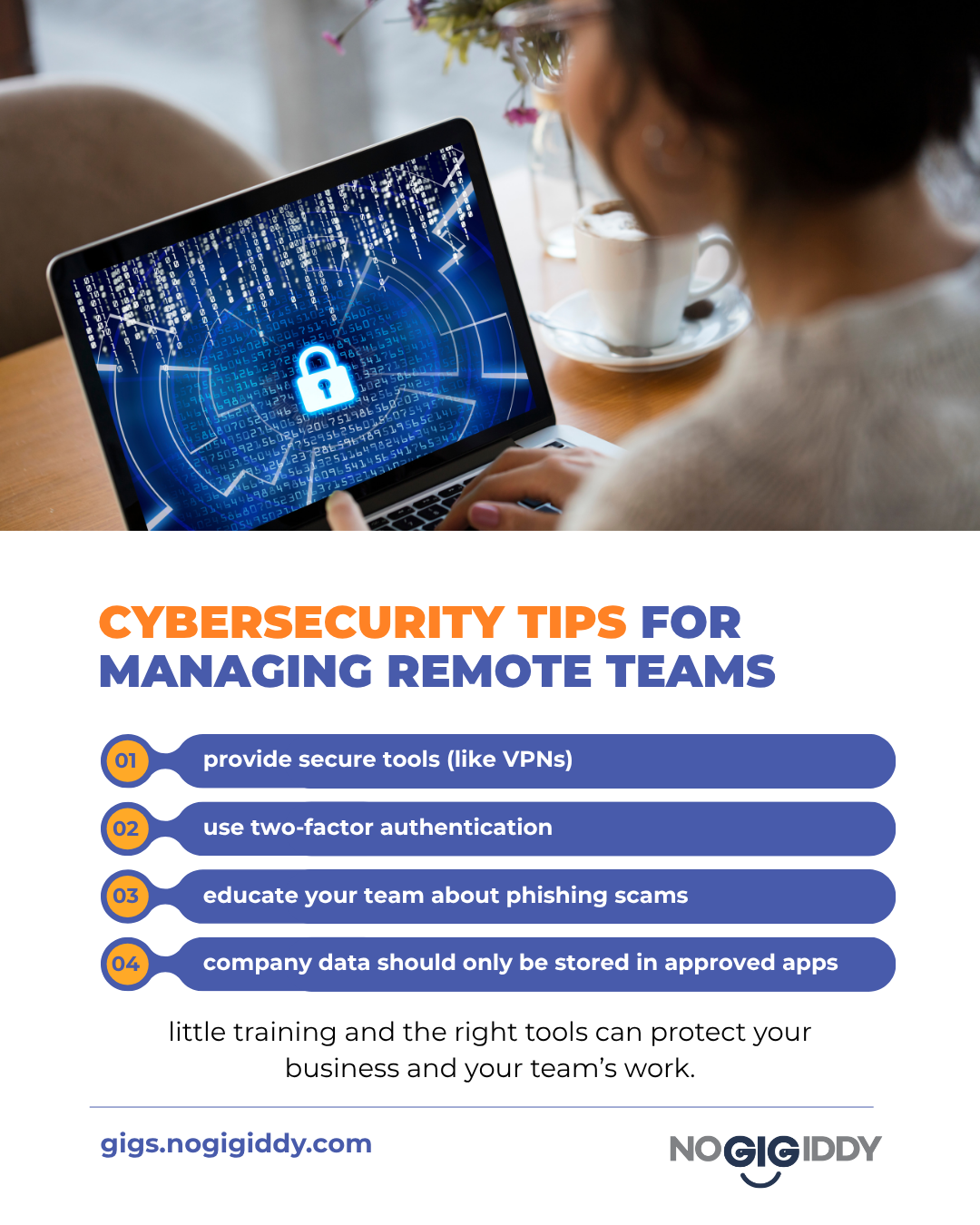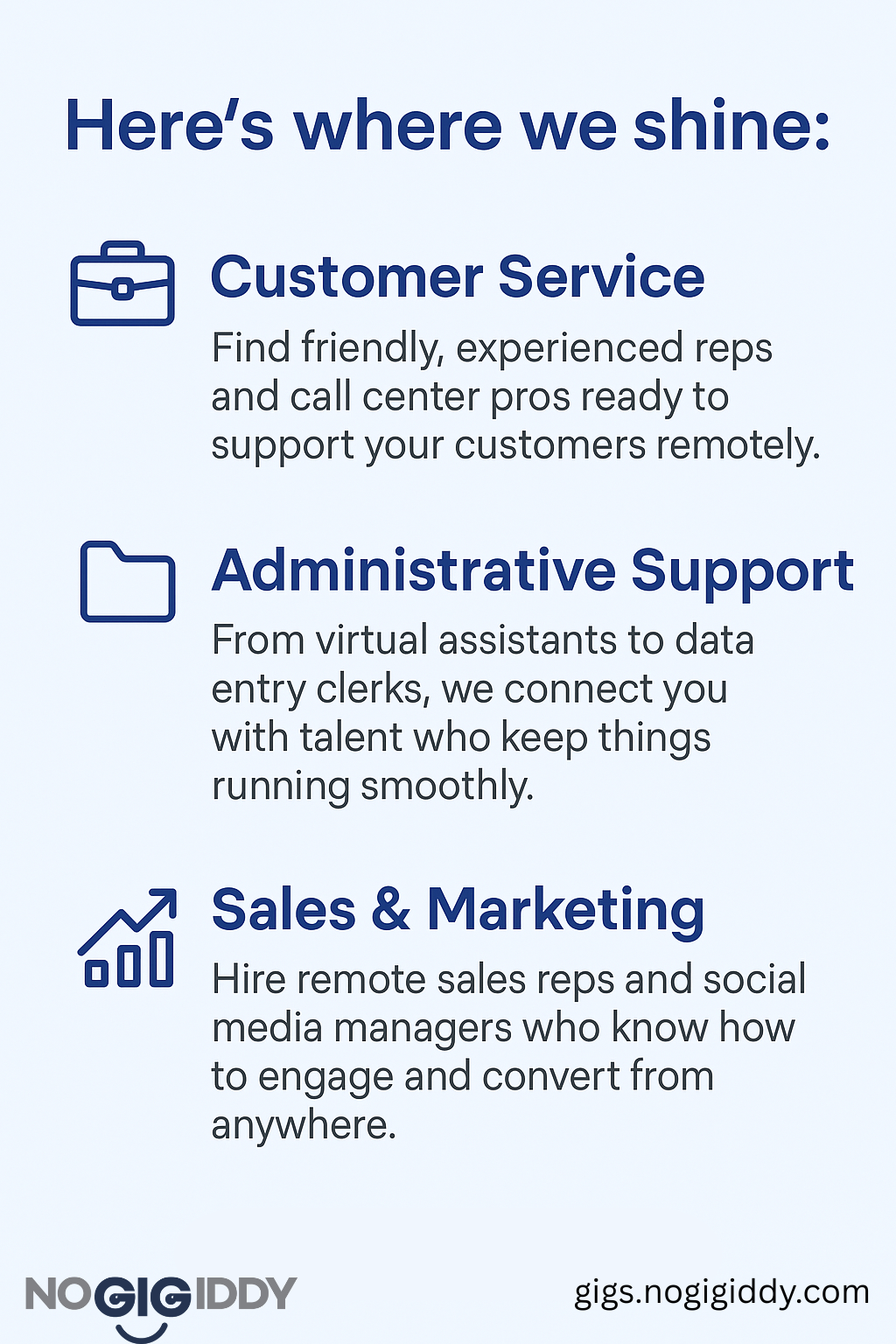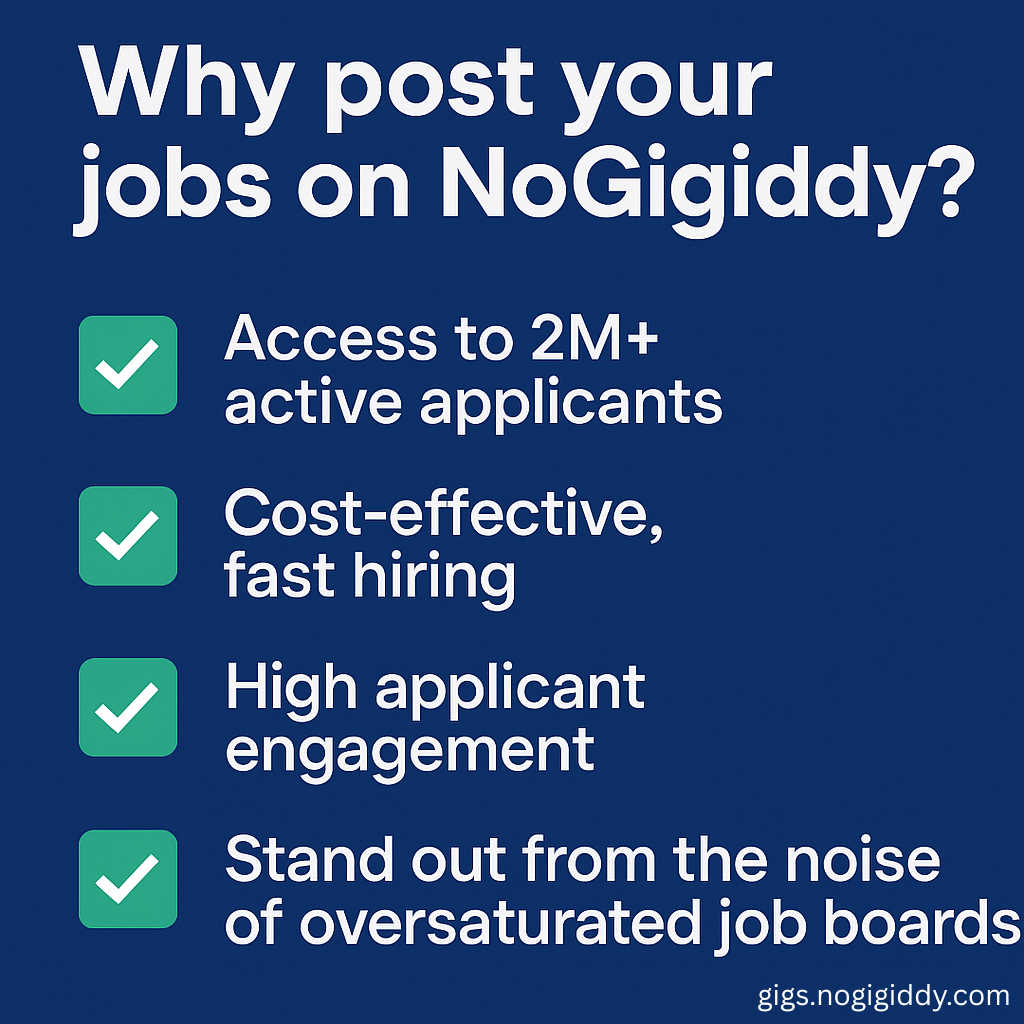
Estimated Reading Time: 5 Minutes
Managing a remote team means trusting your people — but it also means protecting your business from unseen risks. You’ve probably thought about productivity, communication tools, and onboarding. But if cybersecurity hasn’t made it to the top of your list yet, it’s time to move it there.
At NoGigiddy, we know that businesses want to focus on growth, not glitches. You’re probably thinking:
“I trust my team, but how do I keep company data safe when everyone’s working from different locations and networks?”
That’s exactly what this article will answer.
In the next 5 minutes, you’ll learn:
- How to build cybersecurity awareness into your remote culture
- What simple tools and habits can prevent 90% of remote breaches
- How training and clear communication help your team protect your business
Let’s get started.
1. Provide Secure Tools (Like VPNs)
Every great remote setup starts with the right tools — and security should be built in, not added later.
A Virtual Private Network (VPN) encrypts your team’s internet connection, protecting sensitive company data when employees connect from home Wi-Fi, coffee shops, or public spaces.
If your team accesses shared drives or client information, make VPN access non-negotiable. It’s one of the easiest ways to safeguard your business.
Pro tip: Choose a VPN provider that offers centralized management so you can see who’s connected and when.
Related Article: https://gigs.nogigiddy.com/blog/maximizing-productivity-in-remote-teams-tools-and-strategies
2. Use Two-Factor Authentication (2FA)
Passwords alone don’t cut it anymore. Encourage — or better yet, require — two-factor authentication on all company accounts. This adds a second layer of protection, whether it’s a verification code, email confirmation, or authentication app.
Even if a password gets compromised, 2FA helps keep hackers out of your systems.
Quick win: Set up 2FA for all your main platforms like Google Workspace, Slack, and your CRM.
3. Educate Your Team About Phishing Scams
Remote workers often rely on email for communication — making them prime targets for phishing. Cybercriminals send convincing messages that appear legitimate but aim to steal credentials or install malware.
You can prevent this with education. Teach your team to look for warning signs:
- Urgent or “act now” messages
- Suspicious links or attachments
- Unexpected requests for personal or company information
Action step: Hold short, quarterly security refreshers. Real-world examples go a long way in building awareness.

4. Keep Company Data in Approved Apps Only
With so many digital tools available, it’s easy for employees to start using personal apps or unapproved platforms. The problem? These tools might not meet your security standards.
Make sure company data — especially client information — stays within your approved systems (like Google Drive, Asana, or Slack). It helps you maintain compliance and traceability if issues arise.
Bonus tip: Create a short “approved tools list” so team members know where to store files and communicate.
Related Article: https://gigs.nogigiddy.com/blog/the-top-remote-collaboration-tools-for-productive-virtual-teams
5. Make Cybersecurity Everyone’s Responsibility
Cybersecurity isn’t just an IT task — it’s a team habit. When remote workers understand why security matters, they take ownership.
Encourage your team to:
- Report suspicious activity right away
- Avoid sharing credentials
- Use strong, unique passwords
When cybersecurity becomes part of your company culture, you build trust — with your team, your clients, and your partners.

Ready to Hire Secure, Reliable Remote Talent?
👉 Post your first job for free today at gigs.nogigiddy.com
Because great teams don’t just work remotely — they work safely.

